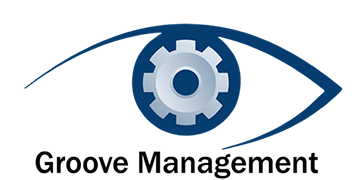Replacing the Corporate Ladder with a Career Scaffold
Since I started my first job twenty-five plus years ago, career progression has always been about climbing the proverbial corporate ladder. David Epstein in his new book Range: Why Generalists Triumph in a Specialized World introduced a different model. David argues that being a generalist and having broad knowledge is more important to career success than a depth of knowledge in any one subject. I agree fully with his logic. David goes on to provide great examples of people who have had great success based on their broad skills. Better to be an athlete than a specialist is his point.
I am a product of a liberal arts education having attended Eckerd College where I studied business management and sociology. I took a broad range of subjects in my undergraduate studies and what my education taught me more than anything else is how to learn. By diving into several subjects, I learned how to be a critical thinker and how to digest materials and turn that into applicable learning. That experience has made me a lifelong learner. A friend and colleague of mine Arlene Hirsch recently introduced me to the concept that there are two different mindsets a person can have:
1) A proving mindset
2) an improving mindset.
The proving mindset is all about showing what you know and how smart you are whereas the improving mindset focuses on continuous learning. People with an improving mindset are curious and they ask lots of questions and study a broad range of topics. I do not see proving versus improving as an either-or proposition. I believe that we flex between the two. There are times when the proving mindset is important such as when you are being asked for your expertise, while there are other situations where listening and learning are the right approach. As an executive coach, I ask my clients to be more mindful about which approach they are using in specific meetings and situations.
Back to David Epstein and the career ladder. David introduced the concept of a career scaffold instead of a career ladder. I love this concept. Ladders have an end point or a top whereas scaffolds can be infinite. Organizations that embrace career development opportunities for their employees, find ways to rotate people often and create a culture where lateral moves are seen as equally enriching to vertical moves tend to have higher engagement and retention rates. The maximum height of a scaffold is determined by the breadth of the base or foundation. Similarly the trajectory of a persons career should be determined by the breadth of their experiences. The more lateral moves an individual makes the stronger their foundation, which in the long run will allow them to progress higher much like a scaffold. Embedding this concept into the learning and development plans for employees is a new concept that few organizations embrace. At my firm, Groove Management, we encourage our clients to build rotational programs and to round out their talent by exposing people to the various areas of a business.
The business world is evolving quickly due to technology acceleration. The skills that someone enters the workforce with will be outdated within the first ten years of a career. Therefore, it is critical for organizations to focus on continuous learning and to build learning cultures. This will insure that employees continue to evolve and adapt as the nature of work changes.
Let’s drop the career ladder and replace it with the career scaffold and start building a stronger foundation for employees in all organizations and lines of work.


